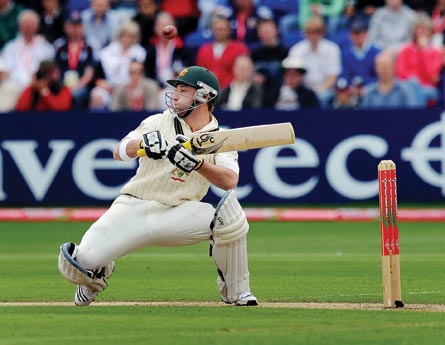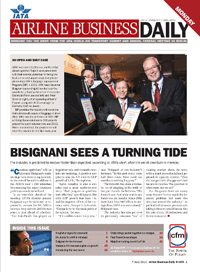Despite the smoke screen of the ash cloud in recent months, traffic is rising across the board. Yields are coming back slowly too, but will they ever fully recover?
After IATA confirmed the bright pace of recovery with its first industry profit forecast for three years, all eyes are now focused on the extent of the yield recovery. And if cautious optimism was an over-worked phrase by airline chiefs during the recent IATA AGM in Berlin, there are signs this is also starting to apply to the yield picture. That GDP and traffic is improving, in many regions faster than ever anticipated, is clear. The key question has been is this translating into improved yields?
 |
|---|
©Rex Features |
| READ MORE |
|---|
 |
| For all the news and views from the IATA AGM in Berlin, read our daily papers from the event here |
In keeping with IATA's observations of an asymmetrical recovery, the picture on yields varies sharply by region. It also fluctuates by business model, aircraft cabin, sector length, and on a route-by-route basis.
Etihad Airways chief executive James Hogan highlights the segmented picture on yields. He says in some markets, like Australia, they are back to 2008 levels. On European routes, in the economy class, yields are good and they are returning well to destinations such as Brussels and Dublin. But he says on the most highly competitive markets, like London, Paris and Frankfurt, there is still some pressure on yields.
"We are already back to 2008 yield levels in cargo and that's what we are pushing for on the passenger side. If I had seen 2008 yields in 2009, I would have broken even in 2010," says Hogan. As it is, with the damage done to yields last year, Etihad's breakeven has been put back a year to the end of 2011.
TWO-PACED RECOVERY
At its simplest, a distinction can be drawn between Europe and the rest of the world. This reflects the continued economic pressures that remain in Europe, which IATA expects to be the only region to remain in the red in 2010. On short- and medium-haul services, where low-cost competition is rife, many European carriers have conceded that business class is virtually dead. This comes as IATA chief economist Brian Pearce warns of "a steady and structural shift" of business travellers from premium to economy seats. But he adds: "That is not the case on long-haul routes, where the decline that we've seen in premium and business seems to be cyclical and we're starting to see that come back."
KLM chief executive Peter Hartman notes that while long-haul premium traffic is indeed coming back, yields remain down: "On long-haul we are seeing business travellers coming back to pre-2008 levels. But yields won't come back to the old levels. We expect on average 10% lower yields."
Air France-KLM is responding to this structural market change by launching a major repositioning of its medium-haul product. From April this saw it introducing a premium economy class and reducing prices across the board. Chief executive Pierre-Henri Gourgeon says: "We've reduced our prices on the medium-haul quite significantly, which is why we've seen an increase in reservations."
|
|---|
From October Air France and KLM also began offering a premium economy class on their long-haul fleets. As carriers like British Airways, Virgin Atlantic and Air New Zealand have found, where the volume justifies this "economy plus" or "business minus" cabin, the yield benefit can be very worthwhile. Air France-KLM is seeing a similar picture in its early results. Gourgeon says: "The revenue per passenger is 2.2 times higher than in economy class over the first few months."
Virgin Atlantic chief commercial and financial officer Julie Southern believes things are "definitely looking up", as she implements revenue management measures to help coax yields higher. She forecasts a gentle yield improvement curve, but cautions: "It is nothing like our peak levels and it's probably too early to say whether and when we will achieve those again."
Virgin's ASKs are 11% lower than 2008 and Southern says it is crucial airlines continue to control capacity to keep ticket prices at sensible levels. "Demanding more for less continues to be a feature of aviation. Am I concerned capacity discipline will fade away? Yes, because that is the trend of the industry. But there hasn't been any signs of a mass rush of aircraft coming back to the market yet because we are still in recovery mode," she says.
BULLISH APPROACH
Emirates has taken an extremely bullish approach to the downturn. "We took a pasting in the early part of 2009," concedes president Tim Clark. But Emirates slashed 16% from its cost base and was able to offer a more aggressively priced premium product. "Our unit costs fell, we grew our capacity and we were able to absorb lower yielding, but higher volumes, in premium. We grew the seat factors in premium classes because all sorts of people came to us who hadn't been able to afford the pricing prior to the meltdown," he explains.
Some analysts suggest Gulf carriers have depressed yields, for instance between London and Asia, by pumping in capacity and discounting premium fares. But Clark is unrepentant about not shrinking his network or grounding aircraft. "The airline community has knee jerk reactions to crises. Frankly I've been in it too long now and I'm not going to do this anymore. We don't need to do this. In the end if you have a good product and you offer value for money, that's the most important thing. People will come back."
He argues that "the price we were charging for the premium offering in the old days was far too high" and some airlines have "got themselves into the trap" of depending too heavily on high-yielding passengers to support their weighty cost base, leaving themselves "effectively beached" when this revenue stream dries up.
And the strategy is paying off. "We pushed the fares up 35% last year between April and December in the light of everyone else going south," says Clark. "Our business cabins remained full, albeit we were getting less money, but this is what you have to do in business. You can't expect it to be a bed of roses all the time. We now have pricing about the same as in the first quarter of 2008, which is already a good yield. Take the cost out, and bingo, profits come along as they have done."
SUCCESS FROM ADVERSITY
Another carrier bucking the market trend is Ryanair, which has just doubled its annual profits in one of the worst years on record. While yields were down 13% for the year ended March 2010, this was not as sharp as the 20% fall it originally feared. Ryanair chief executive Michael O'Leary expects to recoup a large portion of these lost yields in the year ahead, forecasting Ryanair average fares will rise 5-10% for the year to March 2011. Part of this yield improvement reflects Ryanair's more mainstream airport bases of late, such as Malaga, Faro and most recently Barcelona El Prat, which offer higher peak season yields at the expense of longer sector lengths. "The big opportunity for us is the new bigger airports. We are also doing fewer really cheap discounts." But while these bases are already producing strong yields for the summer season, O'Leary says he has "no visibility" on their winter performance yet.
Ryanair's counterpart across the Atlantic, Southwest, is also upbeat about yield trends. First quarter load factors at the carrier rose six points to 75.9%. "Normally when we see traffic and load factors rise, it is at the expense of yields," says chief executive Gary Kelly. "Our yields were up 9.1%, which again is really helping to drive our revenue performance, just outstanding all the way around." And the improvement is getting stronger. January yields were flat, February saw a 9% improvement and March brought a 16% jump.
It is the better than expected unit revenues that prompted IATA to shift its forecast for the Americas to a profit this year. This is evident at low-cost and full service carriers alike. AirTran's yield improvement accelerated during the quarter, resulting in a double-digit increase in unit revenues in March. "Our yields continued to trend upward and remain strong," says chief financial officer Arne Haak, adding second quarter unit revenues are expected to rise 13-14%. JetBlue chief financial officer Dave Barnes says his carrier benefited from positive pricing traction across all markets, although he still sees considerable difference in demand during peak and off peak periods.
On the full-service side, AMR chief financial officer Tom Horton says "yields are trending up significantly versus last year", United president John Tague notes first quarter international unit revenues were up an "impressive" 30%, as corporate travel begins to return, and US Airways president Scott Kirby talks of a "strong year-over-year pricing environment" and "improving corporate demand".
But cautions remains. "Year-over-year comparisons for the first quarter were pretty easy," says Continental chief marketing officer Jim Compton. "On a year over two-year basis, both transatlantic and transpacific business load factors were up several points, but yields were still negative. However, the yield trends are headed in the right direction."
ASIA SETS THE PACE
While Asia was far from unscathed from the yield crisis in 2009 - Cathay Pacific for example seeing yields plummet almost 20% in 2009, putting it below 2006 levels - it is at the heart of the faster than expected global recovery. Chew Choon Seng, chief executive of Singapore Airlines which saw a near 17% fall in yields last year, is buoyed by advance bookings and yields are now looking encouraging. "There's a pronounced recovery in demand for travel in business class. And yields have been retracing the losses. Yields have yet to get up to pre-crisis level, but the trend continues to be in the right direction and we are much heartened by that," he says.
Although we are seeing differing paces of recovery, capacity control and yield management remain top of the management agenda. Chew adds: "The challenge for us is to sustain the recovery, not just in loads, but also in yields. So by having a judicious rate of growth, it is our aim to keep load factors at a level which are above breakeven and yet allow us to recover more of the yield loss."
Malaysia Airlines chief executive Azmil Zahruddin also reports improving yields and, citing its above-average traffic growth, notes the Asian recovery expands well beyond the key Chinese and Indian domestic markets.
But, like his peers across different regions, he doubts a return to previous heady levels. "The long-term trend for yields is very clear, it is down. We have seen a blip, it has dropped [last year] more than it needs to. But it is clear for an airline to survive, the unit costs must continue to come down as your unit revenues will." It is a similar message on the long-term from IATA's Pearce. "Yields have generally been tracking downwards, and we don't see any reason that won't continue."
Source: Airline Business























